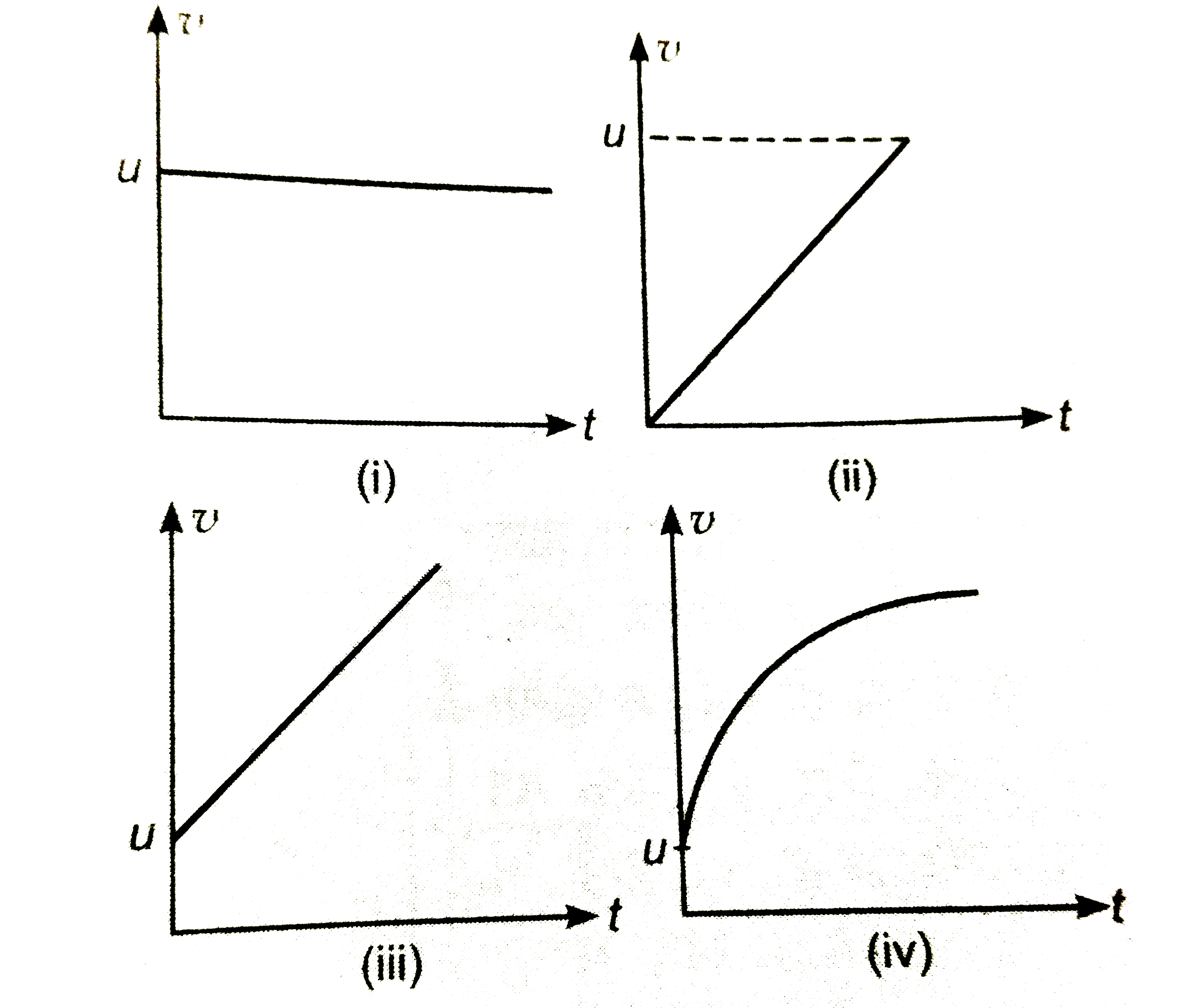For a body moving with a uniform acceleration, prove that its average velocity is the arithmetic mean of its initial and final velocities. Solution in Bengali
Let u be the initial velocity of a body and a be its uniform acceleration. After time t the body acquires a velocity b (say) and s its displacement. Hence average velocity of the body =st. Again the arithmetic mean of the initial and the final velocities of the body
=u+v2=u+u+at2=u+12at
=(u+12at)tt=ut+12at2t=st (Proved).
Topper's Solved these Questions
- ONE - DIMENSIONAL MOTION BOOK - CHHAYA PUBLICATIONCHAPTER - ONE - DIMENSIONAL MOTION EXERCISE - EXERCISE (Multiple Choice Questions)
31 Videos
- ONE - DIMENSIONAL MOTION BOOK - CHHAYA PUBLICATIONCHAPTER - ONE - DIMENSIONAL MOTION EXERCISE - EXERCISE ( Graphical Analysis )
1 Videos
- ONE - DIMENSIONAL MOTION BOOK - CHHAYA PUBLICATIONCHAPTER - ONE - DIMENSIONAL MOTION EXERCISE - Section Related Questions
17 Videos
- NEWTONIAN GRAVITATION AND PLANETARY MOTIONBOOK - CHHAYA PUBLICATIONCHAPTER - NEWTONIAN GRAVITATION AND PLANETARY MOTIONEXERCISE - CBSE SCANNER
19 Videos
- QUESTION PAPERS OF NEET -2017BOOK - CHHAYA PUBLICATIONCHAPTER - QUESTION PAPERS OF NEET -2017EXERCISE - QUESTION
32 Videos
Similar Questions
A vehicle is moving with a uniform speed of 18 km.h−1 . The distance covered by it in 1 s is
View SolutionFor a freely falling body the acceleration graph is -
(A) Straight line parallel to the acceleration axis.
(B) Straight line parallel ot the time axis.
(C) Straight line passing through the origin.
(D) Parabola passing through the origin.
View SolutionDefine rest and motion.
View SolutionWhat is the reason for absence of atmosphere in some planets?
View SolutionA molecule of a substance has permanent dipole moment p . A mole of this substance is polarised by applying a storg electrostatic field E . The direction of the field is suddenly changed of 60∘ . If N is the avogadro's number the amount of work done by the field is
View SolutionThe average velocity of a body moving with uniform acceleration after travelling a distance of 3.06m is 0.34ms−1. If the change in velocity of the body is 0.18ms−1 during this time, its uniform acceleration is .
View SolutionFor body moving with uniform acceleration a , initial and final velocities in a time interval t are u and v respectively. Then its average velocity in the time interval t is
View SolutionVelocity of a body moving a straight line with uniform acceleration (a) reduces by 34 of its initial velocity in time t0. The total time of motion of the body till its velocity becomes zero is
View SolutionA body moving with some initial velocity and having uniform acceleration attains a final velocity v m/s after travelling x m. If its final velocity is v = √180−7x, find the acceleration of the body.
View Solutionएक कण प्रारम्भिक वेग u से एक समान त्वरण के अन्तर्गत गति करता है। इसका वेग –समय ग्राफ है

View Solutionएक पिंड एकसमान वेग ( uniform velocity) से गतिशील है । इसका त्वरण (acceleration ) क्या है ?
View SolutionA body initially at rest is moving with uniform acceleration a .Its velocity after n seconds is v.The displacement of the body in last 2s is
View SolutionA body initially at rest is moving with uniform acceleration a. Its velocity after n seconds is V. The displacement of the body in last 2 is
View SolutionA body moving with some initial velocity and having uniform acceleration attains a final velocity v m/s after travelling x m. If its final velocity is v = √180−7x, find the acceleration of the body.
View SolutionAcceleration is defined as the rate of change of velocity.
Draw the velocity-time graph of a body moving with uniform acceleration a and initial velocity v0.
View Solution
